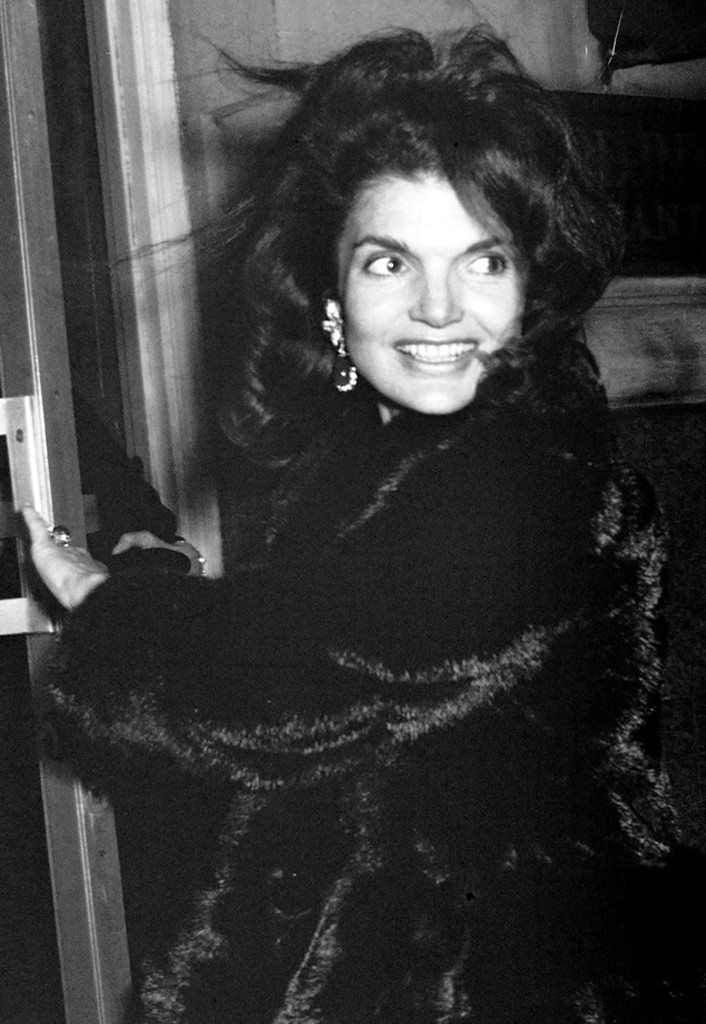
Ron Galella/WireImage
The young woman who would become Jacqueline Kennedy, and then Jackie O., wasn’t raised to wear her heart on her sleeve.
Jacqueline Bouvier was raised to grin and bear it.
The impeccably bred and accomplished elder daughter of a socialite mother and a womanizing, alcoholic stockbroker father whom she adored learned at an early age that poise and turning the other cheek could help take the edge off of life’s misfortunes. She couldn’t help but attract attention, yet circumstances naturally made her extremely distrustful of the press. She would end up spending the entirety of her adult life both acknowledging the feeding frenzy and trying to protect herself and her children from it. She was known for dropping friends who talked openly about their time with the Kennedys behind closed doors or otherwise betrayed her trust, and she’s said to have burned most of her personal letters in the weeks before her death, she was that private.
Despite being a much-admired public figure on her own, she couldn’t help but be primarily viewed while she was alive through the prism of the men who had passed through her life. The last couple of decades have featured countless attempts—from a pile of books to the 2016 slice-of-a-biopic Jackie, focusing on the days immediately following her husband’s assassination—to get at the core of the enigmatic woman who suffered through some of the cruelest twists of fate possible, and then perhaps mercifully died before she could be dealt one more.
Jacqueline Kennedy Onassis remains, 25 years after her death from cancer at the relatively young age of 64, a larger-than-life figure, someone who will forever be remembered as one of the most compelling first ladies to ever live in the White House, before she became the blood-stained widow who was sitting inches away from President John F. Kennedy when he was shot to death in Dallas on Nov. 22, 1963, and then stood in shock beside Lyndon B. Johnson as he was hastily sworn in as president aboard Air Force One.
“In the years since her death, I have asked myself the question, When does someone no longer belong to you, but belong to history?” daughter Caroline Kennedy wrote in the foreword to Jacqueline Kennedy: Historic Conversations on Life With John F. Kennedy, comprising eight and a half hours of talks she had with historian Arthur M. Schlesinger Jr. a few months after JFK was assassinated.

Keystone-France/Gamma-Keystone via Getty Images
Most complicatedly she was a woman who, as the queen of “Camelot,” so carefully managed her public image as to be unknowable, her determination to paint exactly the right portrait of her life as first lady, and then make sure the world saw what she wanted them to see. On an easier note, to most people she was simply the epitome of style and poise, a taste-maker for the ages who has inspired the fashion choices of countless women in her wake, including the current first lady, Melania Trumpwho also has been taking a queue from the Jacqueline Kennedy playbook when it comes to the veil of stoicism she’s been forced to wear.
“People who didn’t know her paid too much attention to her things—clothes, jewelry, objects—during her life and after,” Carl Sferrazza Anthony, who put together the 1997 book As We Remember Her: Jacqueline Kennedy Onassis in the Words of Her Friends and Family, told the Washington Post.
Jackie went to Vassar at the behest of her family (she had preferred Sarah Lawrence), and spent her junior year at the Sarbonne before transferring to George Washington University, where she got her degree in French literature. But upon graduating her mother and stepfather made her turn down an offer of a year working at Vogue, her prize for winning the magazine’s Prix de Paris essay contest.
After spending the summer of 1951 in Europe with younger sister Lee (the future Lee Radziwell, ex-mother-in-law of now ex-Real Housewives of New York City star Carole Radziwell), Jackie got a $42.50-a-week job as an “Inquiring Camera Girl” with the Washington Times-Herald, where she wrote about the coronation of Queen Elizabeth II and got to interview dashing Massachusetts Congressman John F. Kennedy.
“I think people had a sense of her style but probably didn’t understand how well-read and interesting she was,” Caroline told the Boston Globe in 2011. And though the first chapter of her mother’s public life revolved around her husband and her commentary suggested she considered a woman’s place to be in the home, making life easier for him, later in life Jackie was the picture of ladies’-magazine-style independent womanhood.
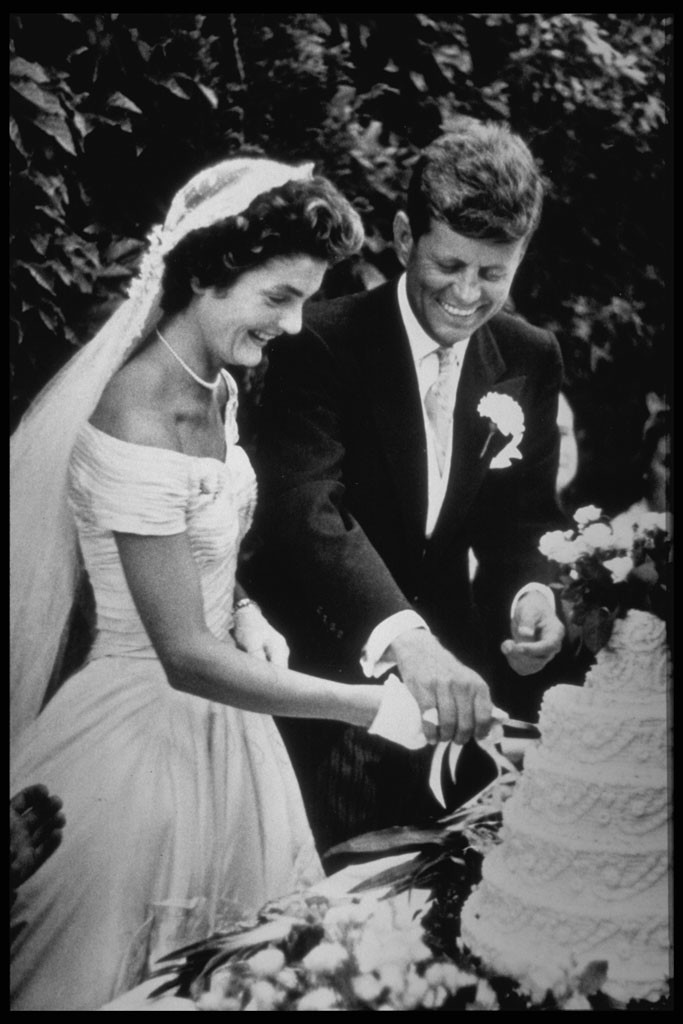
Brooks Kraft LLC/Sygma via Getty Images
She married JFK on Sept. 12, 1953. Her still-beloved father, John Bouvier, was too drunk to walk her down the aisle, so stepfather Hugh Auchincloss, whom she was close to, stepped in to do the honors.
Despite one view of Jackie as the long-suffering wife, however, she was sharp, witty and socially cunning, knowing full well how important she was to her husband’s political aspirations and ready to do the job.

Art Rickerby/Time & Life Pictures/Getty Images
In the Schlesinger interviews, Jackie said that the best years of her marriage to John were, though marred by scandal and sadness, the three they spent at 1600 Pennsylvania Avenue. She had suffered a miscarriage in 1955 and their first child, a daughter they named Arabella, was stillborn in 1956. Caroline was 3 and John F. Kennedy Jr. was 2 months old when the family moved into the White House, which Jackie proceeded to redecorate.
JFK, while positively beloved by his supporters, has proved to have one of the most complicated legacies in American presidential history, and that doesn’t even include his parlor-room joke of a personal life. He was a shockingly prolific philanderer and Jackie, who at 10 witnessed her parents’ marriage implode, didn’t budge from his side.

Nina Leen/The LIFE Picture Collection/Getty Images
She recalled to Schlesinger, according to accounts of the tapes, telling her husband during the Cuban missile crisis, “‘If anything happens, we’re all going to stay right here with you. I just want to be with you, and I want to die with you, and the children do, too—than live without you.'”
Meanwhile, the Kennedys kept separate bedrooms in the White House and Jackie would spend time at their horse farm in Virginia, the only home they ever got to build together. (Though “farm” is a misnomer; dubbed Wexford, it was really a 5,050-square-foot house on a 167-acre estate.)
According to photographer Cecil Beaton‘s diaries, JFK once told his sister-in-law Lee about Jackie, “I love her deeply and have done everything for her. I’ve no feeling of letting her down, because I’ve put her foremost in everything.”
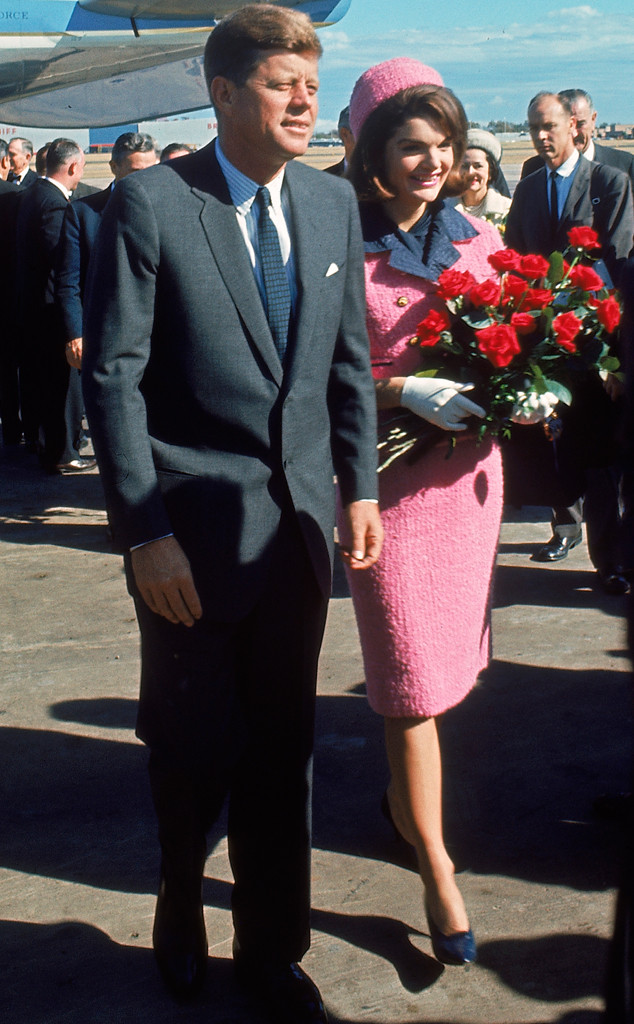
Art Rickerby/Time & Life Pictures/Getty Images
Another child, son Patrick, was born five weeks early, on Aug. 7, 1963, and died two days later. Ironically, the loss was said to have brought Jackie and John closer together, and even marked a turning point in their relationship after 10 years of JFK’s bad behavior. Three and a half months later, he was dead.
After her husband’s murder, Jackie, who was born on Long Island and lived in Manhattan in a Park Avenue duplex until her parents’ divorce, moved with her kids back to New York, ready to start over.
“She was always reading!” Caroline recalled to Parade in 2011. “That’s the image I have when I think of her. In New York, she’d be reading when I came home from school or in the evenings. In the summer, we’d swim in the mornings, and in the afternoons she’d read on the porch. She always said that reading the memoirs of [the French palace] Versailles was the best preparation she had for the White House, because the way people behaved at court was like how they did around the president.”
Herself a mother of three, Caroline marveled over how young her mother was, just 34, when her world came crashing down in November 1963.
“I think a lot of her courage, strength, and dignity came from within,” she said. “She had a very strong moral code, self-discipline, and commitment to me and John and to my father’s memory that made her able to continue. I think my mother was not as overtly or devoutly religious as my grandmother and some other relatives were. But she had a very deep inner spirituality that allowed her to rebuild her life.”
Jackie found out that Robert F. Kennedy had been shot, on June 5, 1968, from her brother-in-law, Stas Radziwell, who phoned her from London, at 4 a.m. New York time. RFK, who had just won the Democratic presidential primary in California, died the following day.
“They’re killing Kennedys in America,” Jackie was later quoted as telling a friend, terrified by the latest tragic twist in the Kennedy family saga and fearing for her children’s safety.
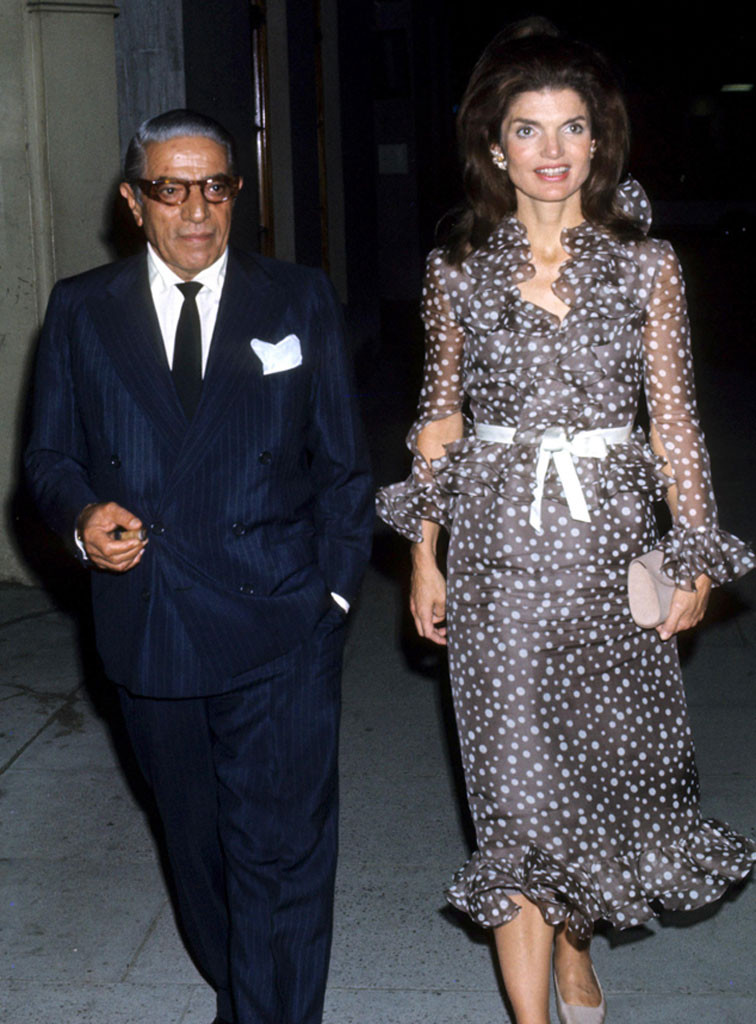
Tom Wargacki/WireImage
Apparently desperate for a change of scenery, that October she married Greek shipping magnate Aristotle Onassis, a father of two who was 29 years older, divorced and had been having a decade-long affair with opera star Maria Callas. He also had a personal relationship with Jackie’s still-married sister, Lee Radziwell.
The match baffled people who knew Jackie and how protective she was of the Kennedy legacy. John and Robert Kennedy reportedly didn’t trust him when Ari first came into their lives, and were fiercely opposed to the idea of Lee ever marrying him. After her son Patrick died, and though JFK tried to talk her out of it, Jackie spent four weeks abroad with Ari and Lee on his yacht, the Christina, to shake her depression. She reportedly wrote a pile of letters to her husband and returned home feeling much better. Onassis had even encouraged her to stay strong by JFK’s side on the campaign trail that fall.
Lee, needless to say, was shaken by the news but maintained her composure and attended the wedding. She told the press, “I am very happy to have been at the origin of this marriage, which will, I am certain, bring my sister the happiness she deserves.”
Radziwell died in February at the age of 85.
The ladies had been close, with Lee rushing to Jackie’s side when JFK was shot and purchasing an apartment nearby when her big sister moved to New York, but Lee—a fashion icon and society maven in her own right—was admittedly not thrilled with her perennial second-fiddle status. According to Vanity Fair, her sister marrying her former lover was a “staggering blow” to their relationship, though they would remain in each other’s lives. Still, Jackie hadn’t even told her that they were engaged.
“In some funny way, I’m lucky that there was so much more interest in my sister,” Lee had reflected to the New York Times in 2013. “At times it was annoying, at times funny. Perhaps the most depressing part was that whatever I did, or tried to do, got disproportionate coverage purely because of Jackie being my sister. But you learn to deal with scrutiny, even the lies, as long as it’s not malicious.”
Jackie wore Valentino at the wedding, which took place on Skorpios, Ari Onassis’ private Greek island. Sen. Ted Kennedy helped negotiate the prenuptial agreement, and she got $3 million up front.
According to Tina Cassidy’s Jackie After O, when her friend Truman Capote asked why she had married Onassis, Jackie replied, “I can’t very well marry a dentist from New Jersey!”
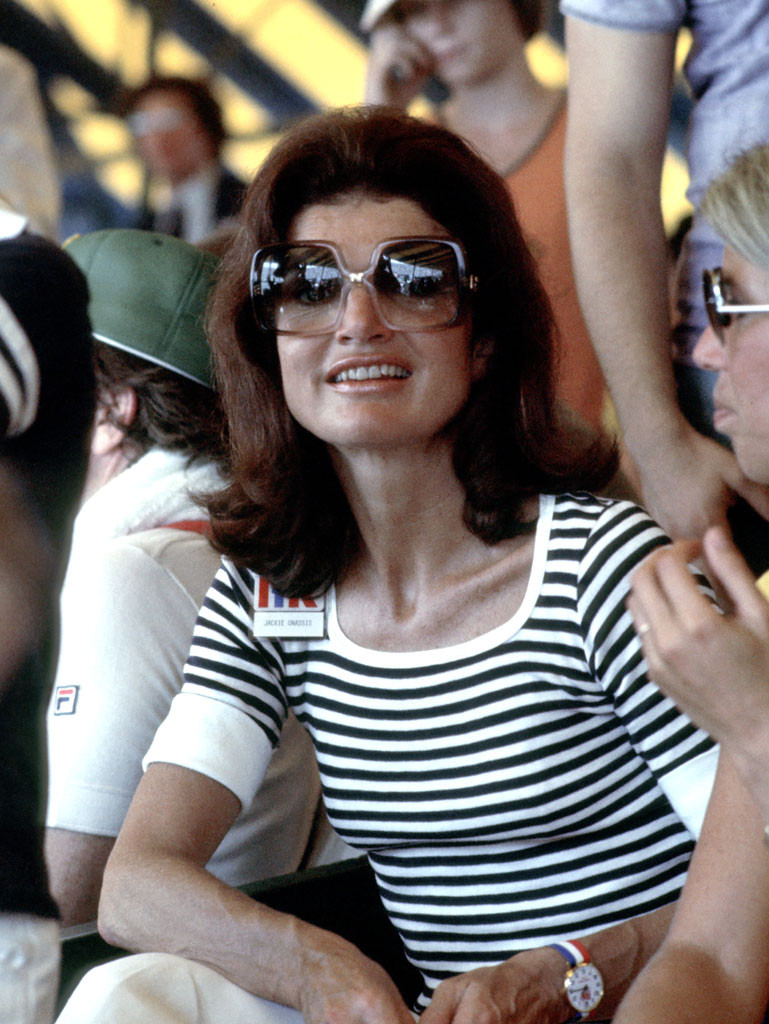
Ron Galella/WireImage
This marked the beginning of her “Jackie O.” period, where—no longer compelled to wear mainly American designers—she made oversized François Pinton sunglasses, Gucci bags, the Cartier tank watch and Joy by Jean Patou into major status symbols.
The Onassises had all the money in the world, but Ari is rumored to have taken up with Maria Callas again one month into their marriage. Still, they outwardly enjoyed the jet-set lifestyle—sunbathing on the yacht, dropping in at the hottest nightclubs—until 1973, when Ari’s 24-year-old son, Alexander Onassis, was killed in a plane crash. Then his first wife and mother of his children, Tina, died of a barbiturate overdose in October 1974. Onassis was consumed by depression and his health started to decline; he died of respiratory disease in 1975.
There were reports that Onassis had started divorce proceedings before he died, and that he had hired a private investigator to dig up dirt on his wife, but his daughter Christina formally denied it. She’s said to have settled on a multimillion-dollar payout for her former step-mother from her father’s estate, provided Jackie not pursue any further legal action.
Christina Onassis, who married and divorced four times and was left in charge of the Onassis Group when her father passed away, died suddenly of a heart attack at the age of 37 in 1988.

Ron Galella/WireImage
It was after she was twice-widowed that Jackie reinvented herself yet again as a book editor, first at Viking Press and then Doubleday. She was also a committed patron of the arts and an architectural preservationist, working to prevent some structures from being knocked down and to stop others from being built.
“Her friends told me those were the happiest years of her life, helping authors, writing introductions, putting together art books,” Carl Sferrazza Anthony told the Post. “Those and her years just out of college as a Washington Times-Herald Inquiring Cameragirl columnist.”
Starting in 1980, she found a new companion in Belgian businessman and diamond merchant Maurice Tempelsman, who remained married but estranged from his wife, with whom he had three children. Paparazzi were her other near-constant companions, enough so that she ended up getting a restraining order against one particularly pesky shutterbug who followed her all over town.
In the 2018 documentary Always at the Carlyle, Jackie was remembered as a regular patron of the storied Upper East Side hotel, coming into the restaurant multiple times a week to enjoy a cobb salad and gin and tonic, a cigarette always in hand. Her son also liked lunching there alone, and would come breezing in on his rollerblades.
Jackie didn’t make a habit of getting political out in the open, but she gave money to Bill Clinton‘s campaign for president in 1992 and hosted Hillary Clinton at her Fifth Avenue apartment to discuss life in the White House as first lady. “You have to be you,” Jackie encouraged her.

AP Photo/Paul R. Benoit
Though she was still considered the toast of New York society to everyone who knew her, and to everyone who didn’t—a living legend in their midst—Jackie never quite managed to shake an aura of sadness. Perhaps she had just experienced too much loss, and lived through too much of a nightmare, and was too inextricably linked to a period of great national regret to ever not seem almost like a ghost from another time.
Jacqueline Kennedy Onassis was diagnosed with non-Hodgkins lymphoma in early 1994 and she died at home on May 19, her late father’s birthday. The funeral mass was held at St. Ignatius Loyola Roman Catholic Church, the same church where she was baptized at as an infant.
Among the bold-faced names, aside from members of her and her late first husband’s famous family, were Daryl Hannah, Mike Nichols, former first lady Lady Bird Johnson, Hillary Clinton, opera singer Jessye Norman and numerous other political figures. No one from the Onassis family was in attendance. Tempelsman stood in a place of honor with the rest of the family and read the C.P. Cavafy poem “Ithaka” at the funeral. He had been at her bedside when she died and rarely left her side in her final months as she grew frailer, maintaining her trust till the end.
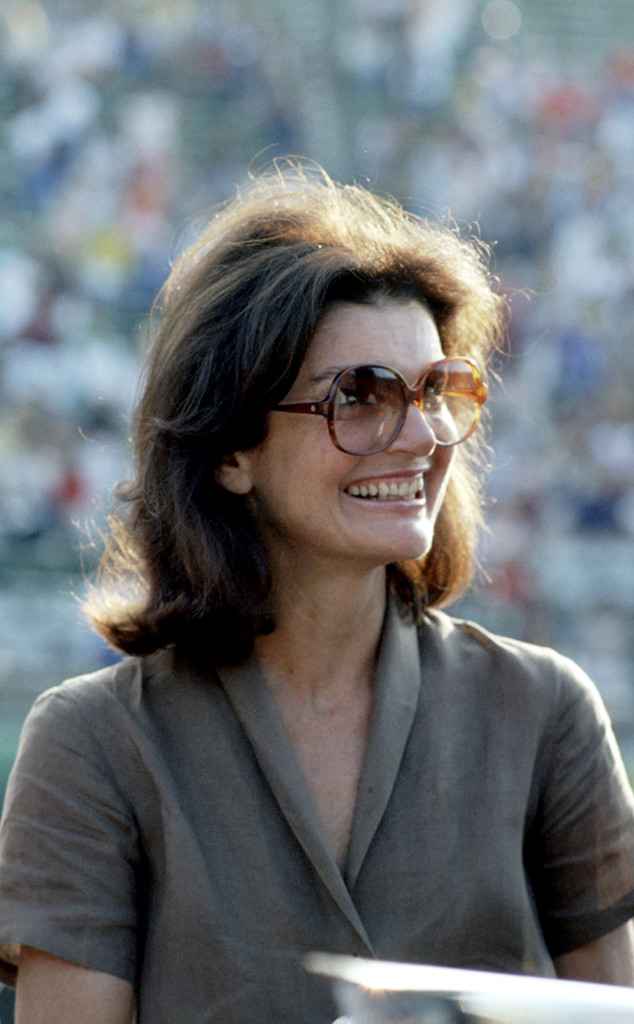
Ron Galella/WireImage
President Clinton delivered the eulogy at her burial service at Arlington National Cemetery, calling Jackie a “remarkable woman whose life will forever glow in the lives of her fellow Americans.” She was buried next to President Kennedy, his grave site being the spot where she lit an eternal flame 31 years beforehand.
“God gave her very great gifts and imposed upon her great burdens,” Clinton said. “She bore them all with dignity and grace and uncommon common sense.”
A 1996 auction of Kennedy Onassis’ furniture, art and other personal items—including her first wedding dress, designed by Ann Lowe—netted $34 million at Sothebys. She left $250,000 apiece to Caroline and John Jr., plus proceeds from the sale of her NYC apartment and estate on Martha’s Vineyard, as well as the sale of her personal effects, which she arranged for in her will.
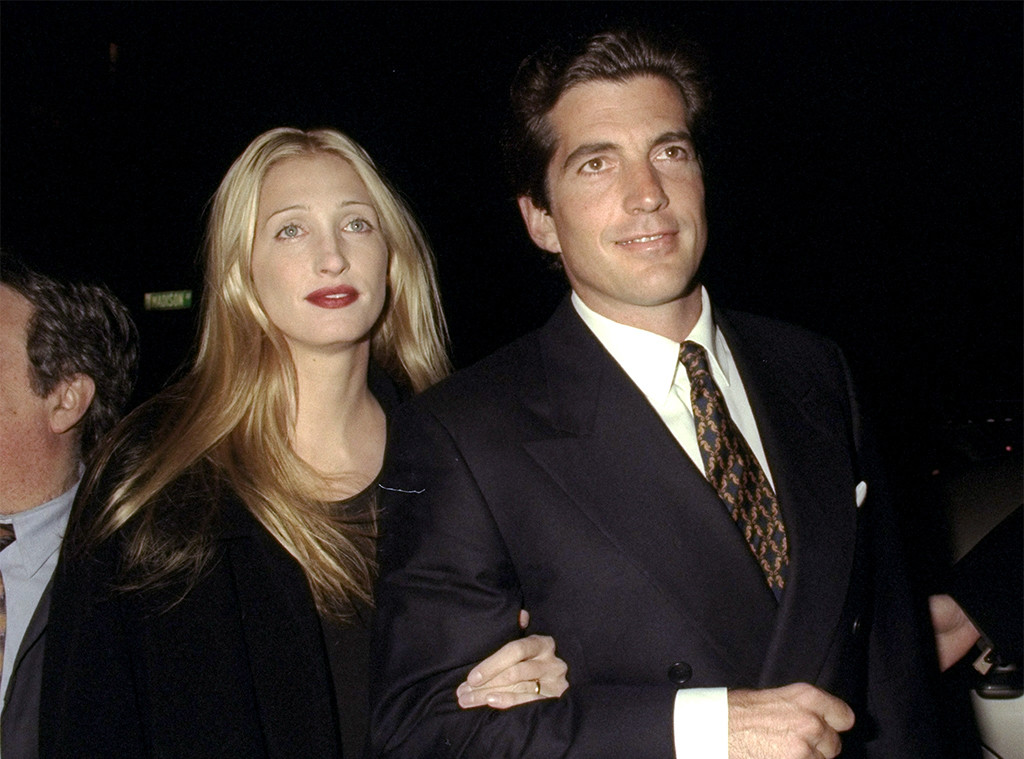
Richard Corkery/NY Daily News Archive via Getty Images
John F. Kennedy Jr. married Carolyn Bessette on Sept. 21, 1996, in an intimate, private ceremony that his mother would have approved of. On July 16, 1999, they were both killed, along with Carolyn’s’ sister Lauren Bessette, in a plane crash on their way to Martha’s Vineyard. JFK Jr., not an experienced pilot, was flying the small plane and is said to have gotten disoriented.
“I live right near where I grew up,” Caroline Kennedy told Parade in 2011. “So every time I run around the reservoir in Central Park [which is named after her mom] or I go to get ice cream where we used to go with Mummy…I mean, certainly, she is very present in my life.
“I think about her and John all the time. I constantly think about what she would have done or how she would have handled something, and the same with John. And so certainly when on the Cape or the Vineyard, which they both loved, they’re with me all the time.”
(Originally published July 28, 2018, at 3 a.m. PT)
